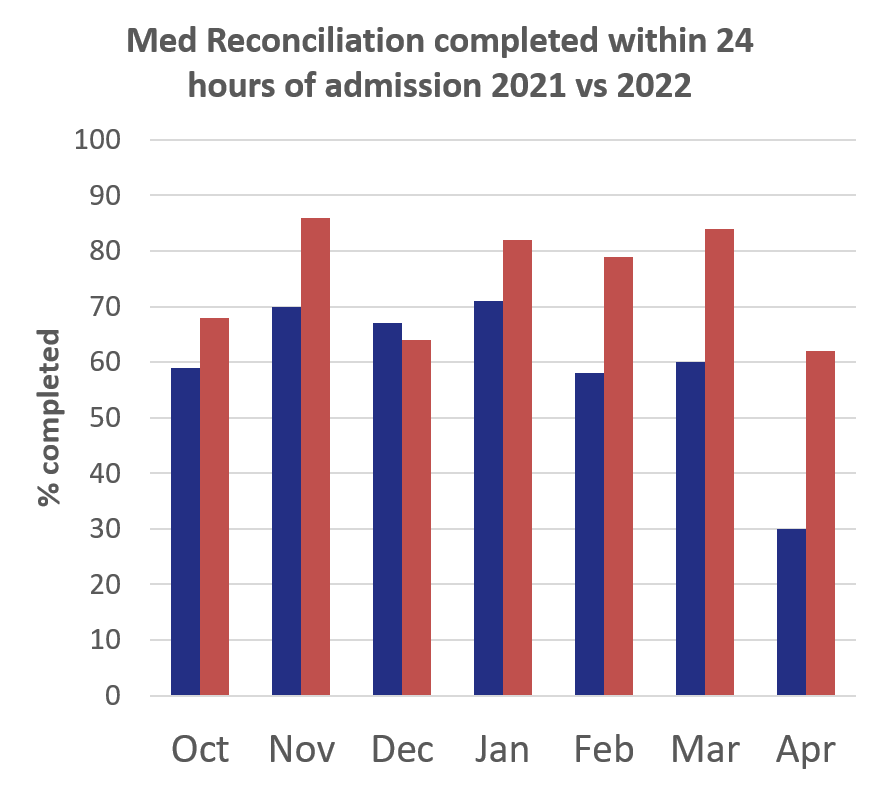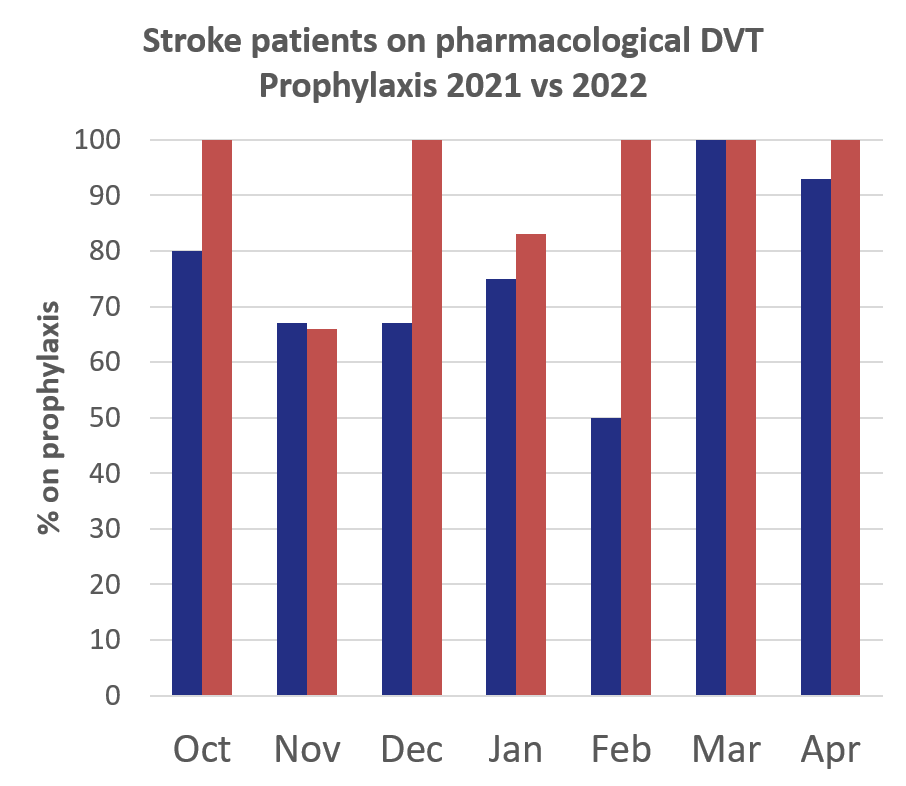Background: Prior to the COVID Pandemic, the telemedicine market was expected to grow at a rate of 18.4 percent a year. With the Coronavirus Preparedness and Response Supplemental Appropriations Act signed into law in March 2020, Telehealth has experienced rapid expansion. Tele-hospital medicine is carving out several new niches. One is providing a virtual hospitalist presence in rural hospitals that can’t support or recruit full-time, on-site physician coverage. The Hospital Medicine Division at AUMC started a program at Roosevelt Warm Springs Hospital in August 2021, a rehabilitation hospital located in rural Georgia to help the support staffing needs.
Purpose: We aimed to determine the clinical outcomes of a newly implemented telehospitalist program. The specific outcomes we targeted were DVT prophylaxis compliance in stroke patients, Medication reconciliation completion within 24 hours of admission, and case mix index change over time.
Description: Study Design: Retrospective Cohort Study Setting or Dataset: Academic medical center, Post Acute Care Rehabilitation HospitalPopulation studied: Patients admitted at Roosevelt Warm Spring Rehabilitation Hospital that were seen by the tele-hospital medicine program from August 2021-April 2022. A total of 317 patients seen during FY22 were compared to 456 patient seen during usual care in FY21. We excluded the patient in July prior to the start of tele-hospital medicine program. We also excluded the data for August and September the medicine patient were being split between in house providers and tele hospitalist. Outcome Measures: DVT prophylaxis in stroke patients, Medication reconciliation with 24hrs of admission, Case mix index
Conclusions: Medication Reconciliation: Analysis include 336 patients in 2021 and 274 in 2022 from the months of October to April. There is a statistically significant difference in the percent of medication reconciliation completed within 24 hours between 2021 and 2022 with a mean of 58% and 75.4% respectively (P-value 0.017). DVT Prophylaxis: Analysis include 52 stroke patients in 2021 and 38 in 2022 from the months of October to April. There is a statistically significant difference in the percent of DVT prophylaxis ordered on admission between 2021 and 2022 with a mean of 79% and 94.6% respectively (P-value 0.043). In addition, the goal of >90% DVT prophylaxis rate was achieved in 2022. Case Mix Index: There has been a general uptrend in case mix index since 2014. 2022 marks the highest index in the last four years at 1.76.


